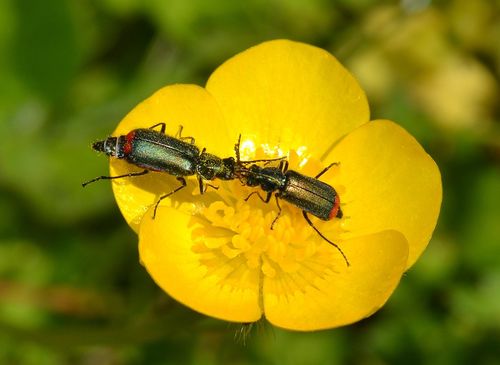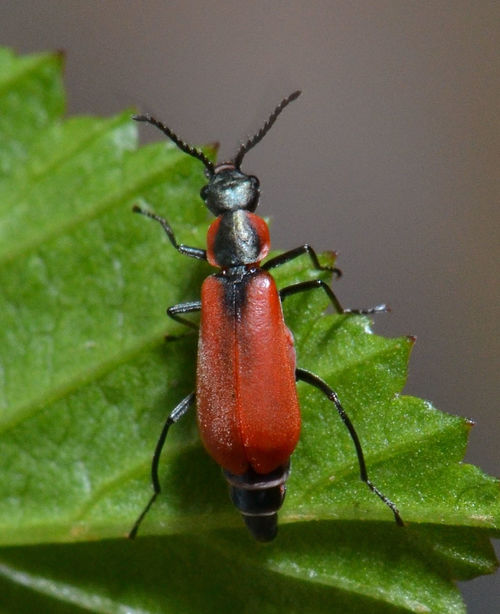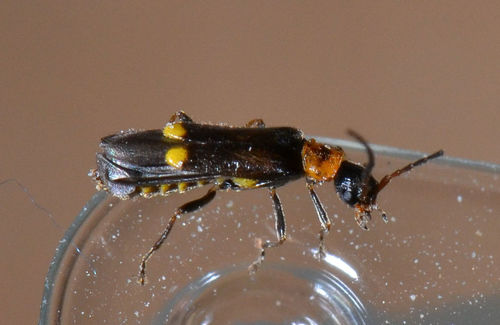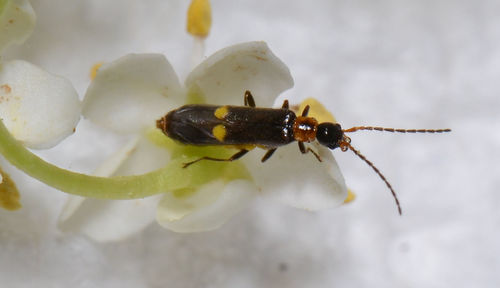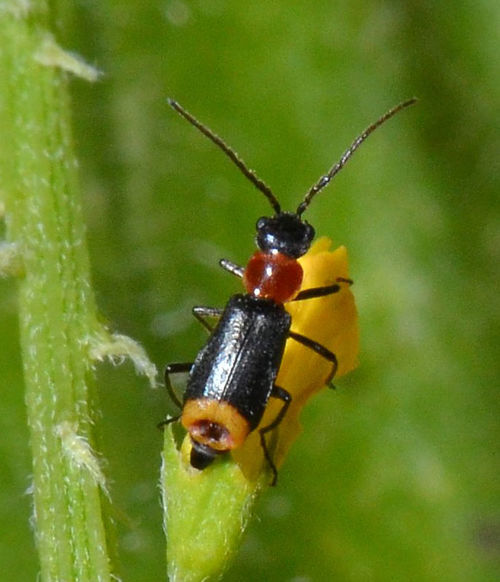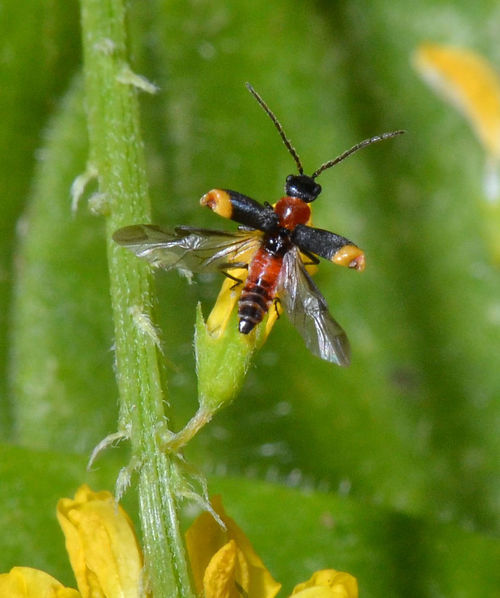A few attractive beetles encountered in Worcestershire in 2013
Gary Farmer
The summer of 2013 was memorable for late emergence times, shortened periods of activity and an abundance of many species during that brief hot spell. Whilst using a sweep net along hedgerows during the summer I noticed many more small beetles than usual, so I decided to attempt to identify some of the more colourful ones from photographs; hoping this would be possible. As with all groups of insects, finding information when starting out is not easy. Two references are given below and it is these that I have taken the life history information.
Four species are covered here; the first is a common species in the county and appeared in very good numbers in 2013. A bright, metallic green/blue beetle with a large red patch at the tip of each elytra make this one readily identifiable. The adults of the Common Malachite or Malachius bipustulatus (Linnaeus, 1758) feed mostly on pollen but have also been seen to feed on the beetle Dasytes aerosus.
Larvae are usually found under bark and in decaying wood. Partly predatory, they also feed on excreta and skins of wood-boring beetle larvae. With so many of these beetles around it was possible to interactions. The two in the photo (01) were sparring on a buttercup flower in Tiddesley Wood 03 June 2013, locking jaws and pushing and pulling each other. Occasionally a third beetle joined in but was quickly repelled by the other two. This went on for a few minutes and when I left them there was still no clear winner. There was certainly no shortage of buttercups in the summer so what was so special about this particular one?
The second species is another member of the malachite family; a small but striking red malachite measuring 4-5mm, Anthocomus rufus (Herbst, 1784) (02). I found several of these at Coney Meadows 13 August 2013 sitting openly on vegetation on the edge of a reed bed. Harde 1998 states that this is a species of marshy areas which feeds on late-flowering sedges. The larvae are predacious feeding on the larvae of wood-boring beetles.
The third species is another small beetle about 4mm long, this time a soldier beetle from the family Cantharidae. A slender beetle with a yellow spot at the tip of the elytra, Malthodes minimus (Linnaeus, 1758) (03 & 04). I swept this species from Elder flowers at Windmill Hill 30 June 2013, Dogwood at Hollybed Farm 06 July 2013 and from shrubby vegetation in Monkwood 20 July 2013. Adults are known to feed from various flowers. The larger soldier beetles have larvae which are ground predators, feeding mainly on slugs and snails but I have been unable to find much information about this species. Alexander (2002) suspects that they probably develop in decaying branch wood or heart wood (feeding on other beetle larvae?).
I encountered a single specimen of the fourth species at Monk Wood whilst sweeping Melilot. I photographed it, presuming it to be a deformed Malthodes as the tips of the elytra appear damaged. However the individual was identified as another malachite Axinotarsus ruficollis (Olivier, 1790), rather than a soldier beetle, and it is a rather uncommon species with a cluster of records in north Worcestershire (John Bingham pers. comm.). The larvae of this species is thought to develop in dead twigs.
Acknowledgement.
My thanks to John Bingham for his help with identification of Axinotarsus ruficollis.
References
Harde, K. W. 1998. A Field Guide to Beetles, Blitz Editions, Bookmart Ltd. Leicester.
Alexander, K. N. A. 2002. The Invertebrates of living & decaying timber in Britain & Ireland – A Provisional Annotated Checklist. English Nature Research Reports No. 467. English Nature (Natural England), Peterborough.
Images
01. Malachius bipustulatus .Gary Farmer
02. Anthocomus rufus. Gary Farmer.
03. Malthodes minimus. Gary Farmer
04. Malthodes minimus. Gary Farmer
05. Axinotarsus ruficollis. Gary Farmer
06. Axinotarsus ruficollis. Gary Farmer
